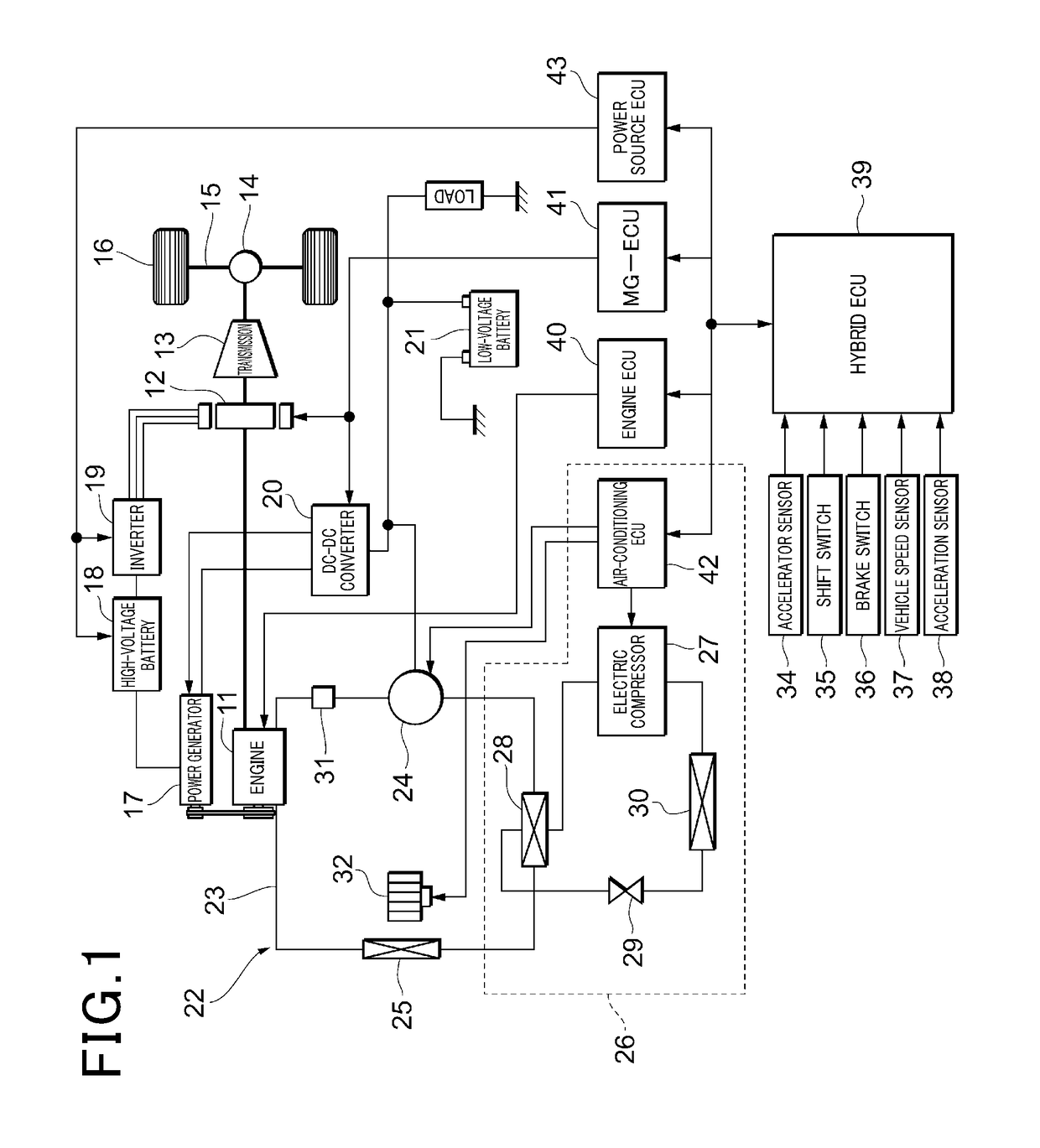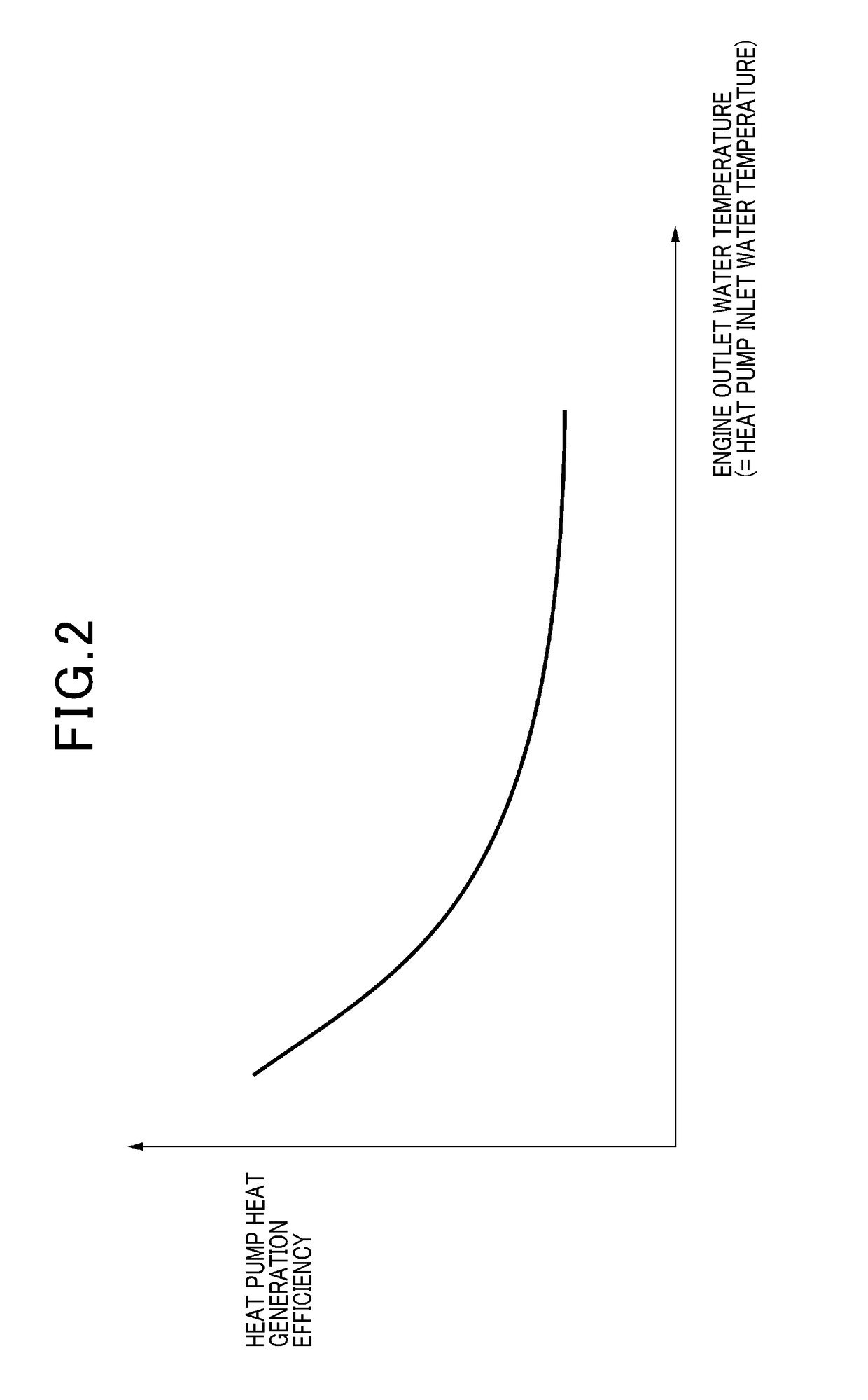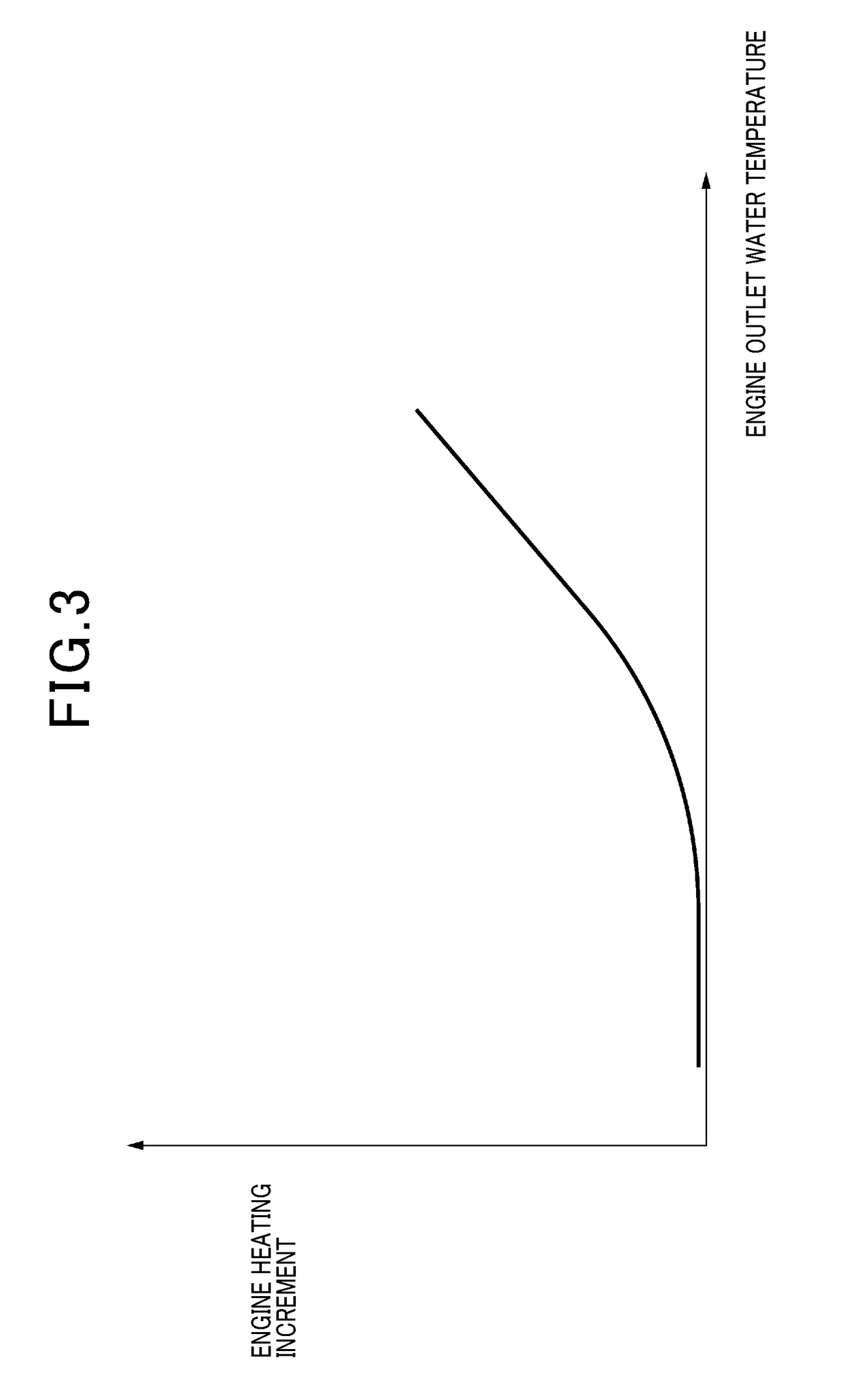Air-conditioner for vehicle
a technology for air conditioners and vehicles, applied in hybrid vehicles, machines/engines, transportation and packaging, etc., can solve the problems of inability to ensure the target thermal amount for heating, and inability to reduce the output of heat pumps. , to achieve the effect of reducing the output of heat pumps, improving fuel economy, and low heat generation efficiency of heat pumps
- Summary
- Abstract
- Description
- Claims
- Application Information
AI Technical Summary
Benefits of technology
Problems solved by technology
Method used
Image
Examples
first embodiment
[0027]A first embodiment will be described with reference to FIGS. 1 to 4. First, an outline configuration of a control system of a hybrid vehicle will be described with reference to FIG. 1.
[0028]An engine 11 as an internal-combustion engine and a motor generator (hereinafter referred to as “MG”) 12 are mounted as a vehicle power source. Power of a crankshaft as an output shaft of the engine 11 is transmitted to a transmission 13 via the MG 12. Power of an output shaft of the transmission 13 is transmitted to wheels 16 as drive wheels via a differential gear mechanism 14 and an axle 15. The transmission 13 may be an automatic / manual transmission configured to switch a gear position in a stepwise manner among multiple gear positions, or a continuously variable transmission as CVT configured to shift gears steplessly.
[0029]A rotary shaft of the MG 12 is coupled so that the power can be transmitted between the engine 11 and the transmission 13 in a power transmission path for transmitt...
second embodiment
[0064]Next, a second embodiment will be described with reference to FIGS. 5 to 8. Note that description of portions substantially identical or similar to those of the first embodiment will be omitted or simplified, and differences from the first embodiment will be mainly described.
[0065]For example, a heat pump 26 also changes its heat generation efficiency depending on output as a rotation speed of an electric compressor 27, and an output range with a high heat generation efficiency changes according to an engine outlet water temperature. Considering such characteristics, a heating thermal amount control routine of FIG. 5 as described later is, in the second embodiment, executed by a hybrid ECU 39 for performing the following heating thermal amount control. In the heating thermal amount control of the second embodiment, the control of setting the output of the heat pump 26 to a value within a predetermined range set according to the engine outlet water temperature and setting the o...
third embodiment
[0078]Next, a third embodiment will be described with reference to FIGS. 9 to 14. Note that description of portions substantially identical or similar to those of the first and second embodiments will be omitted or simplified, and differences from the first and second embodiments will be mainly described.
[0079]In the third embodiment, a heating thermal amount control routine of FIG. 9 as described later is executed by a hybrid ECU 39 for performing the following heating thermal amount control. In the heating thermal amount control of the third embodiment, characteristics of a heat generation efficiency of a heat pump 26 are set based on an engine outlet water temperature etc. The heat generation efficiency of the heat pump 26 is the percentage of a coolant water heating amount with respect to consumed energy of the heat pump 26. Moreover, characteristics of a power generation efficiency of an engine 11 are set. The power generation efficiency of the engine 11 is the percentage of a ...
PUM
 Login to View More
Login to View More Abstract
Description
Claims
Application Information
 Login to View More
Login to View More - R&D
- Intellectual Property
- Life Sciences
- Materials
- Tech Scout
- Unparalleled Data Quality
- Higher Quality Content
- 60% Fewer Hallucinations
Browse by: Latest US Patents, China's latest patents, Technical Efficacy Thesaurus, Application Domain, Technology Topic, Popular Technical Reports.
© 2025 PatSnap. All rights reserved.Legal|Privacy policy|Modern Slavery Act Transparency Statement|Sitemap|About US| Contact US: help@patsnap.com



